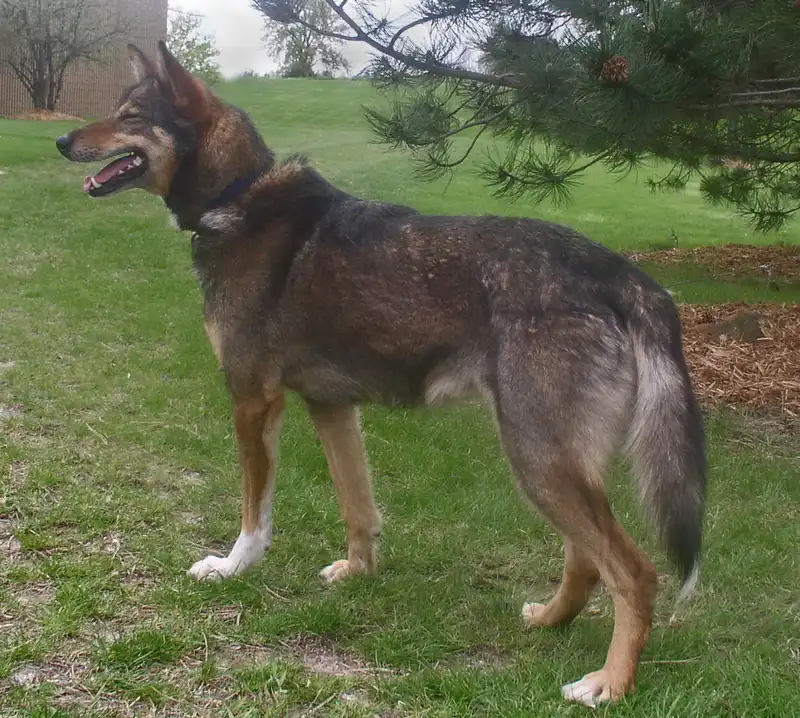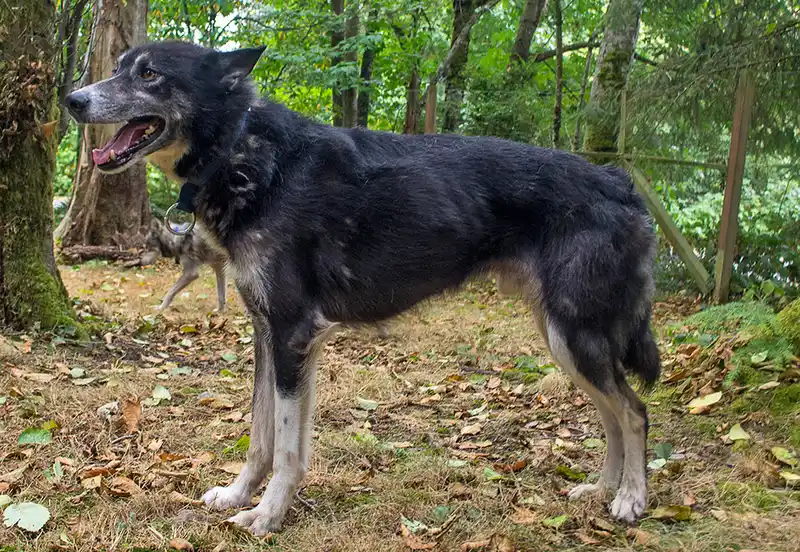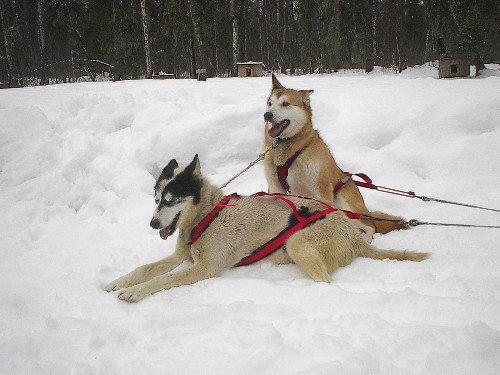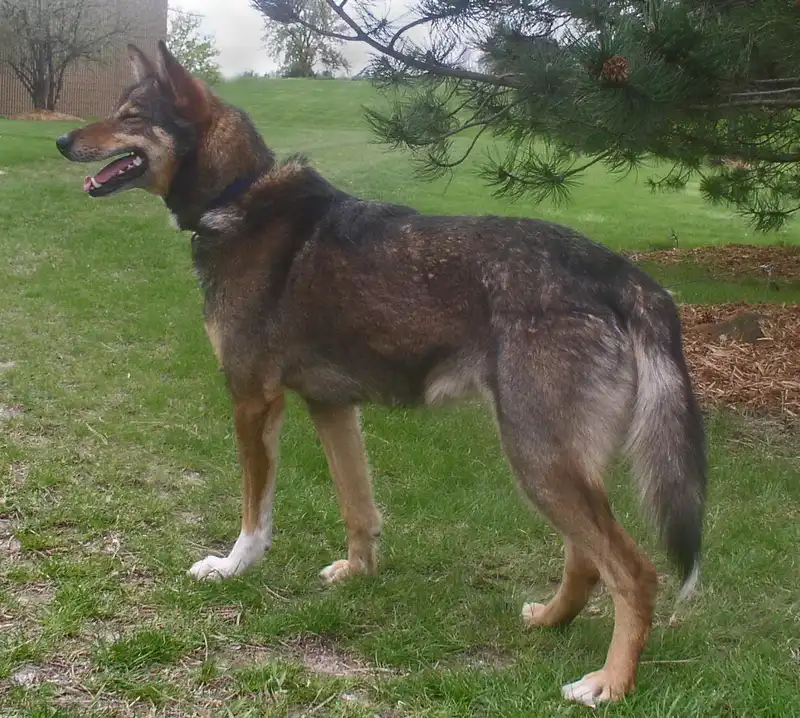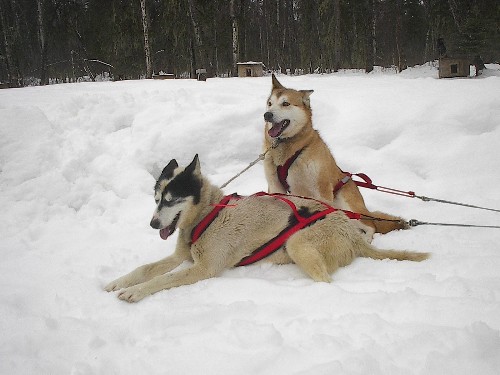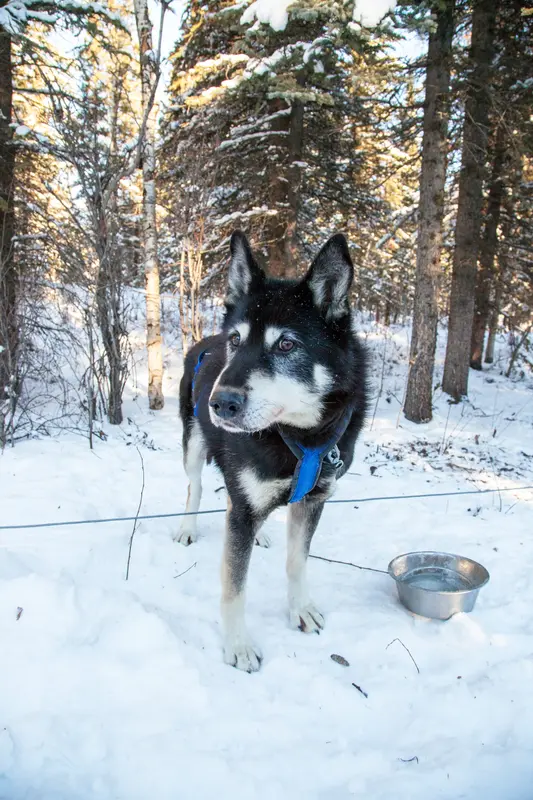Alaskan Husky
The Alaskan Husky is a medium-sized, energetic breed known for its endurance and friendly nature. Originally bred as sled dogs, they require ample exercise and thrive in active households.
Overview
🐕Breed Overview
The Alaskan Husky is a remarkable breed known for its incredible endurance, intelligence, and friendly disposition. Originating from the harsh climates of Siberia and Alaska, these medium-sized dogs were bred by indigenous peoples to pull sleds and assist in hunting. Their thick double coat protects them from extreme temperatures, making them well-suited for cold environments.
With a strong work ethic and a playful nature, Alaskan Huskies are not only excellent sled dogs but also loving family companions. They require ample exercise and mental stimulation to thrive, making them ideal for active families or individuals who enjoy outdoor adventures. Their sociable temperament allows them to get along well with children and other dogs, although they may have a high prey drive that necessitates supervision around smaller pets.
Training an Alaskan Husky can be a rewarding experience, as they are intelligent and eager to please, but they may also exhibit stubbornness, requiring consistent and positive reinforcement methods. Overall, the Alaskan Husky is a versatile and spirited breed that embodies the spirit of adventure and companionship.
Breed Characteristics
Family & Friends
Good Behavior
Get Up & Go
Household Harmony
Temperament & Personality
✨Key Traits
🐕Core Temperament
The Alaskan Husky is known for its friendly and outgoing temperament. They are social dogs that thrive on companionship and enjoy being part of a family.
Their playful nature makes them great with children, and they often get along well with other dogs. However, their independent streak can lead to stubbornness, so consistent training is essential.
They are generally not aggressive but may have a high prey drive, which can lead them to chase smaller animals. Their energetic disposition means they require regular exercise and mental stimulation to prevent boredom and destructive behaviors.
💫Personality Profile
The Alaskan Husky is a lively and friendly breed that thrives on companionship and activity. They are known for their playful nature and love to engage in games and outdoor adventures.
While they are generally good with children and other dogs, their independent streak can sometimes lead to stubbornness, making training a challenge. They are social animals that require regular interaction with their human families and may become bored or destructive if left alone for long periods.
Their high energy levels mean they need plenty of exercise to keep them happy and healthy, and they often enjoy activities that allow them to run and explore.
🔊Vocal Tendencies
Alaskan Huskies are known for their vocalizations, which can include barking, howling, and a unique 'talking' sound. They may bark to alert their owners or express excitement, but they are not excessive barkers.
Howling is a common behavior, especially when they hear other dogs or are left alone for extended periods. Their vocalizations can vary from dog to dog, with some being more talkative than others.
Overall, they are moderately noisy dogs that enjoy expressing themselves.
Affection & Social Traits
Energy & Activity
Communication Style
Care Requirements
🏃♂️Exercise Requirements
Daily Exercise
The Alaskan Husky is an incredibly active and energetic breed that requires a significant amount of exercise to maintain its physical and mental well-being. Ideally, an adult Alaskan Husky should engage in at least 90 minutes of vigorous exercise daily. This can include activities such as running, hiking, or participating in dog sports like agility or skijoring.
Given their history as sled dogs, they thrive in environments where they can run freely and pull sleds or carts. Puppies require shorter bursts of exercise, around 30 minutes to an hour, spread throughout the day, while senior dogs may need less intense activities but still benefit from regular walks and playtime. Regular exercise not only helps manage their weight but also reduces the likelihood of destructive behaviors that can arise from boredom or pent-up energy.
Insufficient exercise can lead to weight gain, anxiety, and behavioral issues, making it crucial for owners to prioritize their exercise needs.
🏠Living & Adaptability
Space Requirements
Alaskan Huskies require ample space to thrive, making them best suited for homes with large yards or access to open areas where they can run freely. While they can adapt to apartment living if given sufficient exercise, they may become restless and destructive without adequate space to roam.
A securely fenced yard is essential, as these dogs are known for their ability to escape and may wander off if left unsupervised. In urban settings, owners should ensure they have access to parks or open spaces for daily exercise.
For those living in smaller spaces, regular trips to dog parks or engaging in outdoor activities can help meet their exercise and socialization needs.
Climate Preference
🍲Feeding Guide
Schedule
Food Types
Portion Size
Special Nutritional Needs
Alaskan Huskies may require a diet rich in protein and fat to support their high energy levels. It's important to choose a high-quality dog food formulated for active breeds.
Some Huskies may be prone to food sensitivities, so monitoring their diet for any adverse reactions is essential. Supplements such as omega fatty acids can help maintain a healthy coat and skin.
✨Grooming Requirements
Grooming Overview
The Alaskan Husky has a thick double coat that requires regular grooming to keep it healthy and free of mats. During shedding seasons, which occur twice a year, they will lose a significant amount of fur, necessitating daily brushing to manage loose hair.
Outside of shedding periods, brushing once a week is typically sufficient. Bathing should be done as needed, usually every few months, to maintain coat cleanliness.
Regular nail trimming and ear cleaning are also important to ensure overall health and hygiene.
Care Schedule
Brush weekly; daily during shedding seasons; bathe as needed, typically every 1-3 months; trim nails every 2-4 weeks.
Health Profile
⚕️Health Care
Regular health care is essential for maintaining the Alaskan Husky's lifespan. Routine veterinary check-ups, vaccinations, and preventive treatments can help catch potential health issues early.
Owners should also be vigilant about their dog's weight and overall health, as obesity can lead to various health problems. Providing a balanced diet, regular exercise, and mental stimulation are crucial for keeping them healthy throughout their life stages.
⏳Average Lifespan
Genetic Factors
Genetics play a vital role in the lifespan of the Alaskan Husky. While they are generally a healthy breed, certain hereditary conditions can affect their longevity.
Responsible breeding practices that prioritize genetic diversity can help reduce the risk of inherited health issues. Potential owners should seek reputable breeders who conduct health screenings and provide health clearances for their breeding dogs to ensure the best possible genetic background for their puppies.
Living Conditions
The Alaskan Husky's lifespan can be significantly influenced by its living environment. Dogs that are kept in active households with plenty of space to run and play tend to live longer, healthier lives.
Access to outdoor activities and social interactions with other dogs can enhance their overall well-being. Additionally, a climate that aligns with their cold-weather heritage is beneficial, as extreme heat can lead to health issues.
Proper nutrition and regular veterinary care also play crucial roles in promoting longevity.
Training
🧠Intelligence & Trainability
💪Work Drive
Alaskan Huskies have a strong work drive and thrive when given tasks to complete. They excel in activities that allow them to utilize their natural instincts, such as pulling sleds, running, and participating in dog sports.
Providing them with jobs, whether through structured training or recreational activities, is vital for their mental stimulation and overall happiness. Without sufficient engagement, they may become bored and develop undesirable behaviors.
⚠️Training Considerations
Alaskan Huskies can present some behavioral challenges, particularly due to their high energy levels and independent nature. They may exhibit stubbornness during training, making consistent and positive reinforcement methods essential.
Common challenges include a tendency to escape if not properly contained, as well as a strong prey drive that may lead them to chase smaller animals. To mitigate these issues, early socialization and obedience training are crucial.
Engaging them in mentally stimulating activities can also help reduce boredom-related behaviors, such as digging or excessive barking.
📝Training Tips
Training an Alaskan Husky requires patience and consistency. Positive reinforcement techniques, such as treats and praise, work best to motivate them.
Short, engaging training sessions are recommended to keep their attention. Socialization with other dogs and people from a young age is essential to develop their friendly nature.
Incorporating fun activities, such as agility or obedience competitions, can enhance their learning experience and strengthen the bond between the dog and owner. It's important to establish clear boundaries and rules to guide their behavior effectively.
History & Heritage
📜Origin Story
The Alaskan Husky's origins can be traced back to the ancient sled dogs of Siberia, where they were bred by the Chukchi people for their ability to pull sleds over long distances in extreme cold. As these dogs were brought to Alaska during the gold rush, they adapted to their new environment and became integral to the survival of early settlers and explorers.
The breed's reputation was solidified during the 1925 serum run to Nome, where teams of Alaskan Huskies delivered life-saving medicine across treacherous terrain. This event not only showcased their endurance and loyalty but also marked a turning point in their status from working dogs to cherished family companions.
⏳Development History
The Alaskan Husky is a mixed breed that has evolved from various northern dog breeds, including the Siberian Husky and Alaskan Malamute. Originally bred by the Inuit and other Arctic peoples, these dogs were selected for their strength, endurance, and ability to work in harsh conditions.
Over time, they became essential for transportation and hunting in the Arctic. The breed gained popularity in the United States during the gold rush and has since been recognized for its versatility in various dog sports.
Unlike purebred breeds, Alaskan Huskies are often bred for performance rather than appearance, resulting in a diverse range of physical characteristics and temperaments.
🛡️Purpose & Historical Role
Historically, the Alaskan Husky was bred primarily for sled pulling and transportation in harsh Arctic conditions. They were essential for hunting and herding, aiding their human companions in survival. In modern times, they continue to excel in dog sledding competitions and are also valued as family pets due to their friendly and energetic nature.
🏺Cultural Significance
The Alaskan Husky holds a significant place in the history and culture of the Arctic regions, particularly among the Inuit and other indigenous peoples who relied on these dogs for transportation, hunting, and companionship. Their role as sled dogs during the Klondike Gold Rush and the famous 1925 serum run to Nome solidified their status as heroic animals in American history.
The breed has also been featured in popular culture, including films and literature, which highlight their endurance and loyalty. Today, they are celebrated not only for their working abilities but also as beloved family pets, embodying the spirit of adventure and resilience.
Conservation Status
This breed is well-established with healthy population numbers.
